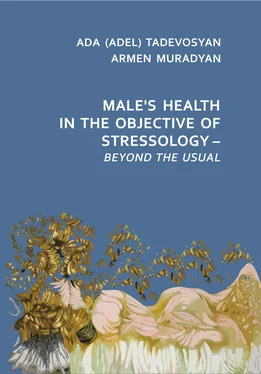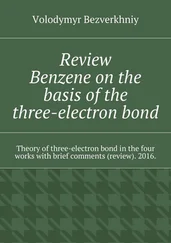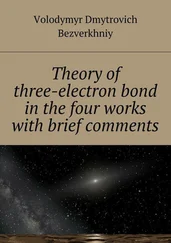LIVE IN CONSENT WITH YOURSELF IS A STATE, PROVIDING NOT ONLY MENTAL AND PHYSICAL HEALTH, BUT ALSO A FEELING OF FULL VALUE
OF LIFE AND ITS SENSE

Ada Tadevosyan at Noravank, 2015.
SYSTEM ADAPTATION APPROACH
TO THE PROBLEM OF HEALTH-ILLNESS
The story of life is not more than a movement
of consciousness veiled by morphology.
Teilhard de Chardin
Nonlinear open systems, which include a person, at all levels are carriers of the universal evolution, which ensures that life will continue its motion into increasingly new dynamic complexity regimes. Microcosm and macrocosm are aspects of a single evolution and human evolution is its important component, and the most complex one. The author of the theory of nonlinear open systems Ilya Prigogine points out that human systems are considered as creative worlds with incomplete information and changing values rather than as “mechanisms” or something from the standpoint of equilibrium. With such an approach, human values and meanings rather than being ignored, perhaps, for the first time reveal their true role – to act as parameters of order, opposing the destabilizing effects generated by the social system itself. In addition, there is such a level of research systems, when the not very popular word “system” can be quite adequately replaced by the more euphonic concept of “ integrity”.

Most of the systems that are of interest to us, are open – they exchange energy or matter (it could be added: and information) with the environment. Biological and social systems undoubtedly belong to open systems, which means that any attempt to understand them within the framework of a mechanistic model is deliberately doomed to failure. V. E. Klochko (2014), the author of the theory of psychological systems, underlines that he studies a person with his capabilities in the environment in which he lives. The human psyche, according to his point of view, does not “reflect the objective world” but allows a person to create his own reality while exchanging with the external environment. All open systems live by exchanging information and energy with the outside world. But it is not a random exchange, but rather a self-selection based on the principle of correspondence. The interaction occurs where compliance is found as the reason for the selective interaction of a person with the environment targeted at finding in the world something “his own, which has not yet become his own”. Where there is a correspondence, a meaning is born. Thus the sense reality is born.
“Integrity” is the unity of man and environment. If we use the terminology of I. Prigogine, then we can say that all systems are complex and contain subsystems that constantly fluctuate. Sometimes a separate fluctuation or a combination of fluctuations can become (as a result of a positive feedback) so strong that the organization that had existed before cannot withstand and collapses. At this critical moment in the bifurcation point it is practically impossible to predict in which direction the further development will occur: will the state of the system become chaotic or will it shift to a new, more differentiated and higher level of order (I. Prigogine, 1986). Having reached the bifurcation point (fork), the essence of which is more vividly illustrated by a fairy-tale knight standing at the crossroads, dissociation (from Latin: dissociation – separation) of a single path for 1–2–3… takes place.

V. Vasnetsov, “The Knight at the Crossroads”.
Dissociation is the universal principle of development both in the physical and biological world. Dissociation in the field of psychosociology is specific, since in the bifurcation point the choice can be “random” or be defined by the Logos according to the principle “might be so, might be differently”.
The further presentation of the material is based on the two, from our point of view, fundamental provisions defining life, human health and illness.
7. The leading role belongs to the pervasive evolution as a result of the implementation of the basic function of living systems (including humans) – function of adaptation in a constantly changing world. The mechanism of dissociation (splitting), which is universal since provides adaptation and development of systems of both biological (SBA) and psychological adaptation (SPA) of a person should be recognized as the main mechanism of adaptation.
8. Dissociation is particularly evident in the psyche, the evolution of which seems to occur according to the principle “maybe this way and maybe some other”, creating the impression of dominance of “randomness” in psychology.
This principle is based on the theory of randomness and its role in the evolution. However after discovery of the Einstein’s theory of relativity (three dimensional space + time), “randomness” as groundlessness loses its meaning. The frequency of “randomness” in nature – as “coincidence” depends on the category of time during which we are searching for causal relationships in a three-dimensional space, causing the emergence of something new. The narrower the diameter of the considered temporal causal world, the more “randomnesses” there are. As the considered causal space-time expands, the more open become causations of a particular phenomenon and emergence of something new. Clearly appears “PATTERN OF RANDOMNESS”.
Moreover, it is not only in physics, but especially in psychology. The pattern of randomness in the field of psychology and psychopathology opened to us Freud, who wrote that adult problems are rooted in his early childhood, discovered the role of early childhood psychic trauma on the subsequent formation of personality, behavior and activity.
Dissociation. In psychiatry and psychology dissociation means decay.
In psychology, this mechanism is referred to the protective mechanisms of the psyche, meaning “detachment” from personal unpleasant experiences that is manifested by different memory changes (amnesias). In psychiatry, analogue of dissociation has long been known under the name of splitting – schizis. Hence the name of the mental disease schizophrenia. Schizophrenia (from the ancient Greek. Σχίζω – Split and φρήν – mind, intellect).
Eugen Bleuler (1857–1939) for the first time used the term in 1908 when describing schizophrenia. Splitting was considered a specific sign of this mental disease. One of the founders of the scientific approach to research of dissociative phenomena, an American psychiatrist Morton Prince (1909–1975) characterized dissociation as “a basic regulating element of the normal neuro-mental mechanism”.
Van der Kolk, Van der Hart and Marmar (2000) include the term “dissociation”, in general terms, to the processes of information processing and determine the dissociation as a way of its organization, as break of connections between certain areas of the contents of memory, their relative separation and independence. Rycroft (1995) in the “Critical Dictionary of Psychoanalysis” defines dissociation as 1) a state at which two or more psychic processes co-exist being not connected or integrated; 2) a protective process leading to a particular state. West (1967) defined dissociation as a “psychophysiological process whereby flows of information incoming, stored and outgoing are actively deviated from integration with its usual or expected associations”. Many forms of dissociative states and their prevalence give the reason to believe that they occupy an important place in the functioning of the psyche and possess great value in terms of adaptation to changing environmental conditions.
Читать дальше















